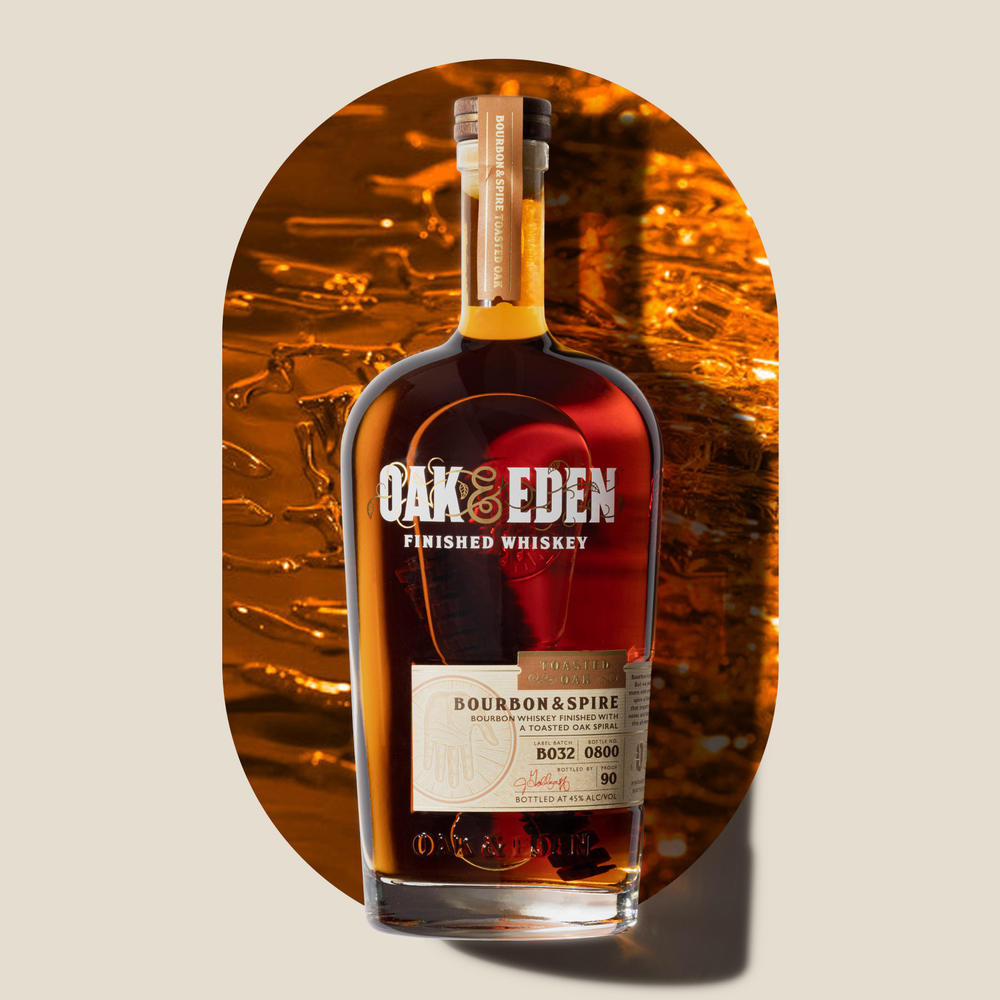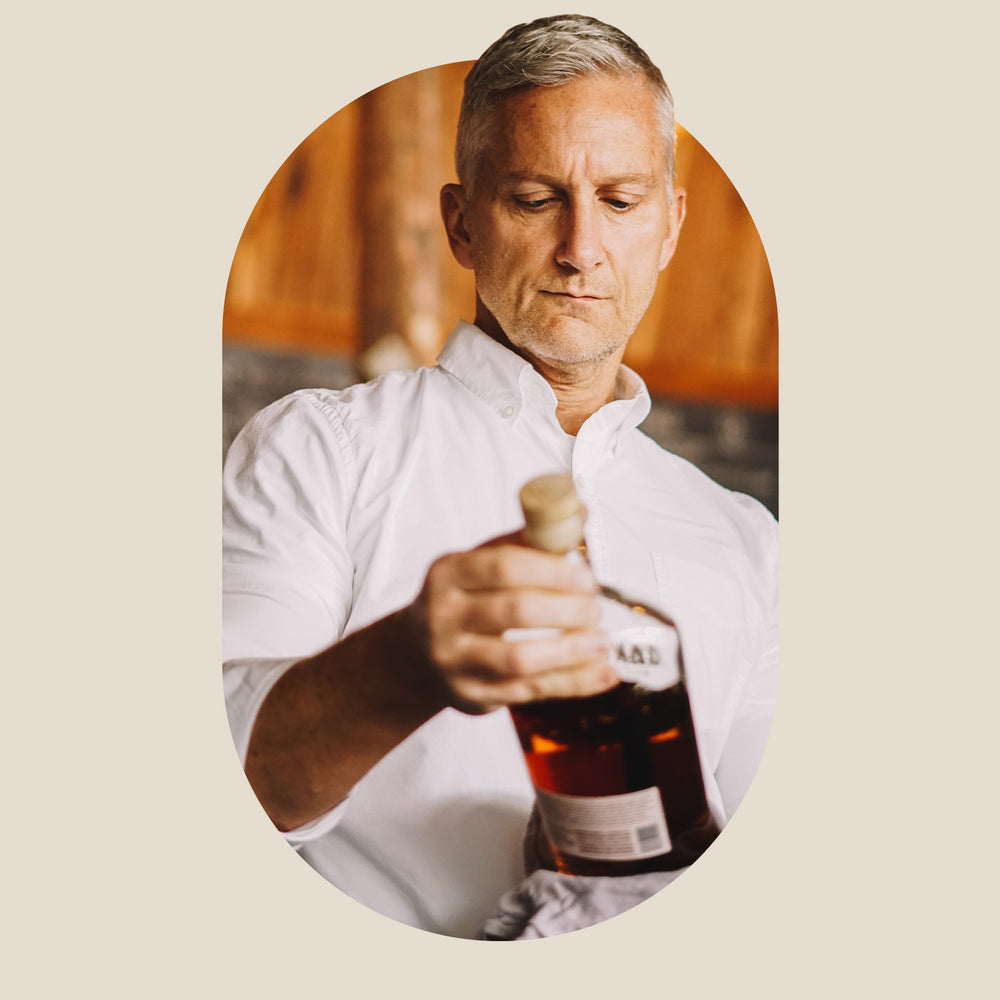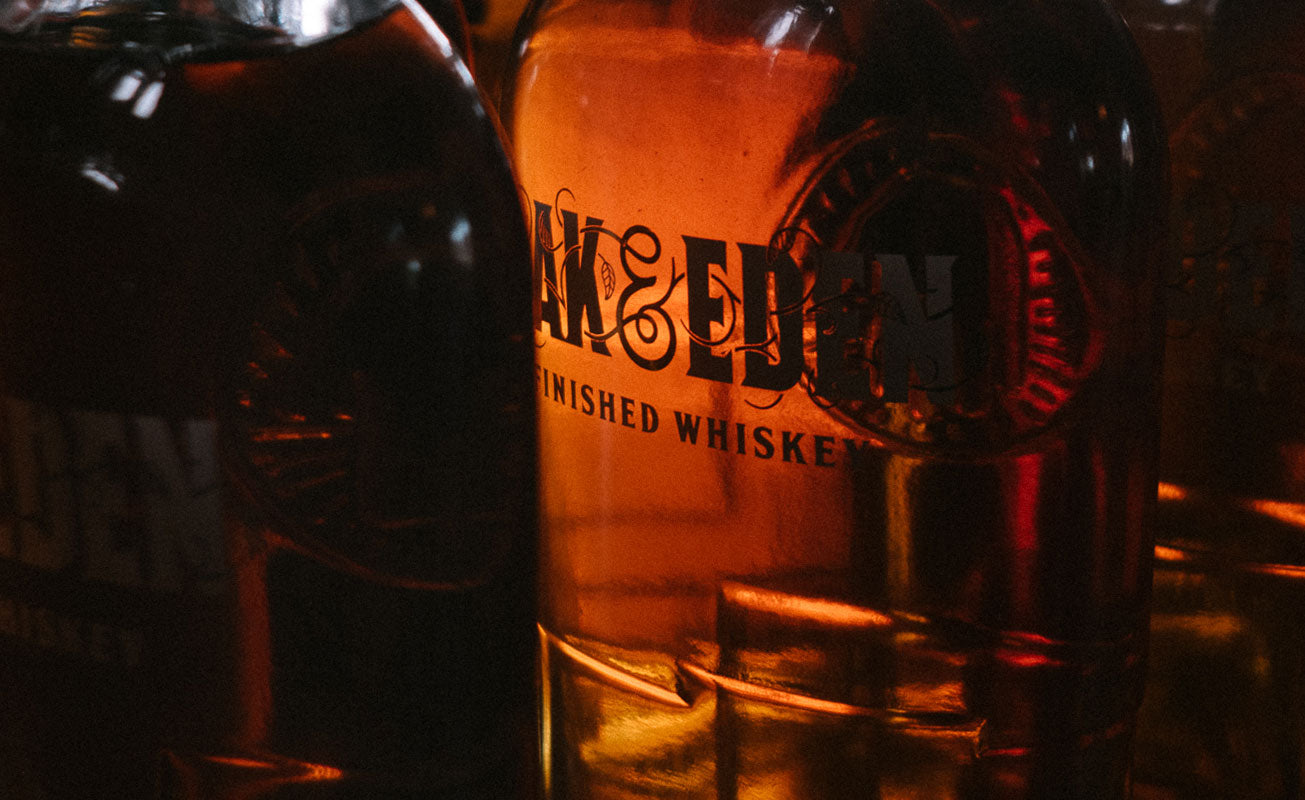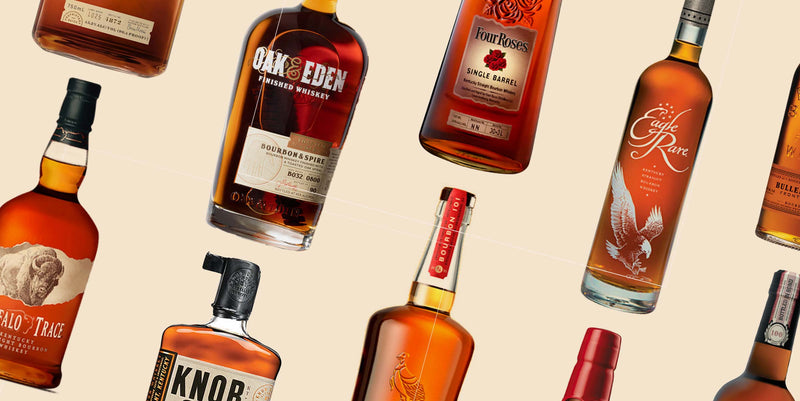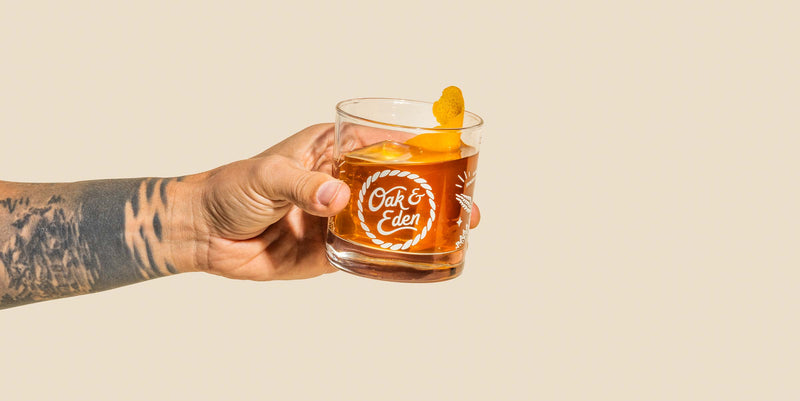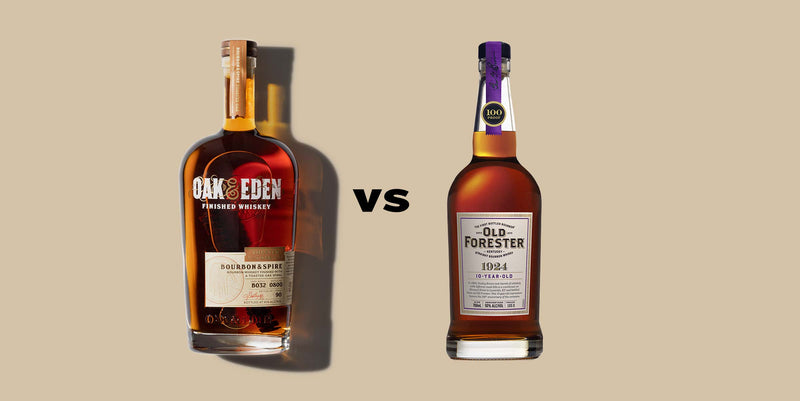What Is Single Barrel Bourbon?
Bourbon is one of the most delicious drinks on the planet. Classic on the rocks, straight up, or as the main ingredient of a cocktail, bourbon is the quintessential American spirit.
But there is also a lot to know about bourbon, and if you are not familiar with bourbon, you can easily start to feel intimidated by all of the jargon floating around. We believe that whiskey should be for everyone — you don’t have to have the palate of a sommelier (or whatever the whiskey equivalent is) to enjoy a bottle of bourbon.
In the pursuit of making whiskey accessible, we want to help you learn more about the whiskey world. Today we’re taking a closer look at the world of single barrel bourbon, a special distinction of bourbon that many newcomers aren’t familiar with.
Here is everything you need to know about single barrel bourbon.
What Is Bourbon?
Bourbon just might be the most famous alcohol to come from the United States. Bourbon is a type of whiskey that must be made in the United States, among other requirements.
All bourbon whiskeys must be made with a mash bill containing at least 51% corn, and the other 49% is typically made of a combination of other grains like wheat, rye, and barley. Bourbon typically features notes of caramel, oak, and vanilla, giving it a sweet and warm flavor and mouthfeel.
What Is Single Barrel Bourbon?
The basic answer is that single barrel bourbon contains only whiskey aged in one barrel, rather than a combination of different barrels.
While this might not seem to matter at first glance, it’s actually essential to the flavors you notice in a bottle of bourbon. The barrel gives the whiskey its color and deep taste, so whiskey or bourbon that comes from a single barrel will feature unique flavors. It’s potentially a combination of flavors that have never been seen before and will never be seen again.
How Is Bourbon Made?
To better understand the specifics that separate single barrel bourbon from standard bourbon, we have to understand how bourbon is made.
Making bourbon starts with farming grains and ends with a delicious, high-proof liquor beverage that can taste equal parts sweet, spicy, smokey, and oaky. Here is a look at the step-by-step process that leads to your favorite bourbons.
Grain Selection and Mashing
The first step of the bourbon-making process is grain selection and mashing. The grains that go into a whiskey are the first element determining the flavor profile of the resulting whiskey.
All bourbon whiskeys must be made with a grain mash bill of at least 51% corn. The remaining 49% is commonly composed of other grains, including wheat, barley, and rye.
The grains are then “mashed,” or processed, to release their sugars before fermentation. Grains are ground very fine before they are placed in a large tank with hot water, where they are stirred and agitated. This helps to release the sugars in the grains, which spurs on fermentation.
Grain Fermentation
Once the mash has been mashed, it can be fermented. It is moved to a new tank where yeast is introduced and feeds on the sugars released during the mashing process. This produces alcohol and alters the flavors of the alcohol.
The fermentation process can take as little as forty-eight hours or as much as ninety-six hours, depending on the types of grains used and the types of yeast used in fermentation. Once the mash has reached 7-10% alcohol by volume, or ABV, it is ready for distillation.
The Distillation Process
Then the bourbon is distilled in a column still. Other types of whiskey, like malt whiskey, are distilled using a pot still, but bourbon is almost always produced in a column still.
The fermented mash, called the distiller's beer, is fed into the column still, where it is heated with water vapor. This causes the alcohol vapors to rise up from the distiller's beer. The rising vapors then hit condensing plates in the column, which condense the gas back into liquid.
The rising hot water vapor evaporates the distilled liquid on the plates again, repeating the process and filtering and further distilling the liquid as it rises.
Eventually, the vapor is led into the condenser, where it is brought back to its liquid state and is ready for aging.
The Aging Process
After distillation is complete, the aging process can begin. Bourbon whiskeys must be aged in new, charred oak barrels, which give the bourbon its flavor. Wood is porous, so the whiskey enters and exits the wood, taking with it chemical flavor compounds and other components that impart flavor.
The aging process is what makes each whiskey unique. As the whiskey ages, the harsh and unwanted flavors in the whiskey are removed while more pleasant flavors are imparted. In general, the longer a whiskey is aged, the better it is considered to be — and the more expensive.
The Bottling Process
Finally, the whiskey is ready for bottling and consumption. During the bottling process, we finally get to the distinction between single barrel bourbon and other bourbons.
During the bottling process for a run of whiskey of a particular style or type, a distiller will typically combine multiple barrels into one bottle to ensure each batch tastes the same.
However, if a single barrel is used for a bottle, that bottle is a single barrel whiskey. This ensures you’re getting the unique flavors provided by that one specific barrel. If it is bourbon, it is single barrel bourbon.
What Is Finished Whiskey?
While many whiskeys are aged in a single barrel during their time, other whiskeys spend time in one barrel and then are moved to another type of cask to increase the number of flavors the whiskey is exposed to.
This process makes the flavor profile of the whiskey more complex and varied. If a bottle spends time finishing, it doesn’t necessarily mean that it can't be single barrel whiskey. As long as the whiskey in the first and second barrels is the same, and each bottle contains whiskey from one cask, it is still a single barrel option.
What Is In-Bottle Finishing?
Most finishing occurs by moving whiskey from the first barrel to another barrel. We wanted to offer another way to finish whiskey.
That’s why we use a patented technique of in-bottle finishing that allows our Oak & Eden whiskeys to mature and develop flavor as they sit in the bottle. We do this with our special, spiral-cut wooden spires, which are designed with optimum surface area to infuse the most flavor possible in your whiskey.
Each spire is expertly crafted to impart the ideal flavors to each blend of whiskey. Finishing in the bottle means that you have complete control over exactly how long you want that whiskey to age. This gives each of our whiskey blends the perfect finishing touch, elevating it to new levels.
Are There Benefits to Single Barrel Bourbons?
By now, you have almost certainly started to wonder the most important question of all: Is single barrel bourbon any better than regular bourbon?
The answer is: Not necessarily, but sometimes. Each barrel of whiskey will be different because of where its location in the storehouse, the wood used for that barrel, and the temperature changes the barrel goes through, among other factors. Some barrels will just taste better than others.
The problem is that you never know exactly what that barrel will taste like until you actually sip it. So when buying single barrel bourbons, you are making a bit of a gamble that that particular barrel is going to be very good.
This can pay off when you find a hit, giving you the best bourbon you have ever tasted. But sometimes, you might get a bottle that you just don’t love. That’s the name of the game.
Are There Drawbacks to Single Barrel Bourbon?
Single barrel bourbon’s most significant drawback is the inconsistency.
This may not impact you if you are a novice whiskey taster or aren’t as into whiskey tasting as you are into whiskey drinking. However, if you love getting out your snifters for a flight of whiskeys, you may notice a difference.
Each individual barrel ages and matures differently based on the unique circumstances that that barrel faces. While sometimes this results in a delicious, once-in-a-lifetime bourbon, more often than not, it just leads to variation.
These variations in flavor are not always what you’re looking for. Buying single barrel bourbon is essentially gambling that the barrel you bought turned out good. When you buy a non-single barrel bourbon, you are getting the benefit of consistency.
Single Barrel Bourbon Takeaways
Single barrel bourbon sounds distinguished and special. And it is — or at least, it has the potential to be.
However, the only thing that makes a whiskey or bourbon single barrel is that the whiskey in the bottle came from one barrel instead of a mix of barrels.
This leads to more variation between each barrel in flavor, where blends produce a more consistent flavor by combining the barrels.
Here at Oak & Eden, we believe that there is another way to get an incomparable whiskey: in-bottle aging. Every bottle of Oak & Eden Bourbon comes with a specially designed wooden spire, which breathes new life into the whiskey while it sits in the bottle. If you’re exploring all the unique places that whiskey can take you, this is a fantastic place to begin.
Sources:
Coffey still | Whisky Advocate
Cocktail Queries: What's So Special about Single Barrel Whiskey? | Paste Magazine
What's the Difference Between Bourbon and Whiskey? | Southern Living

